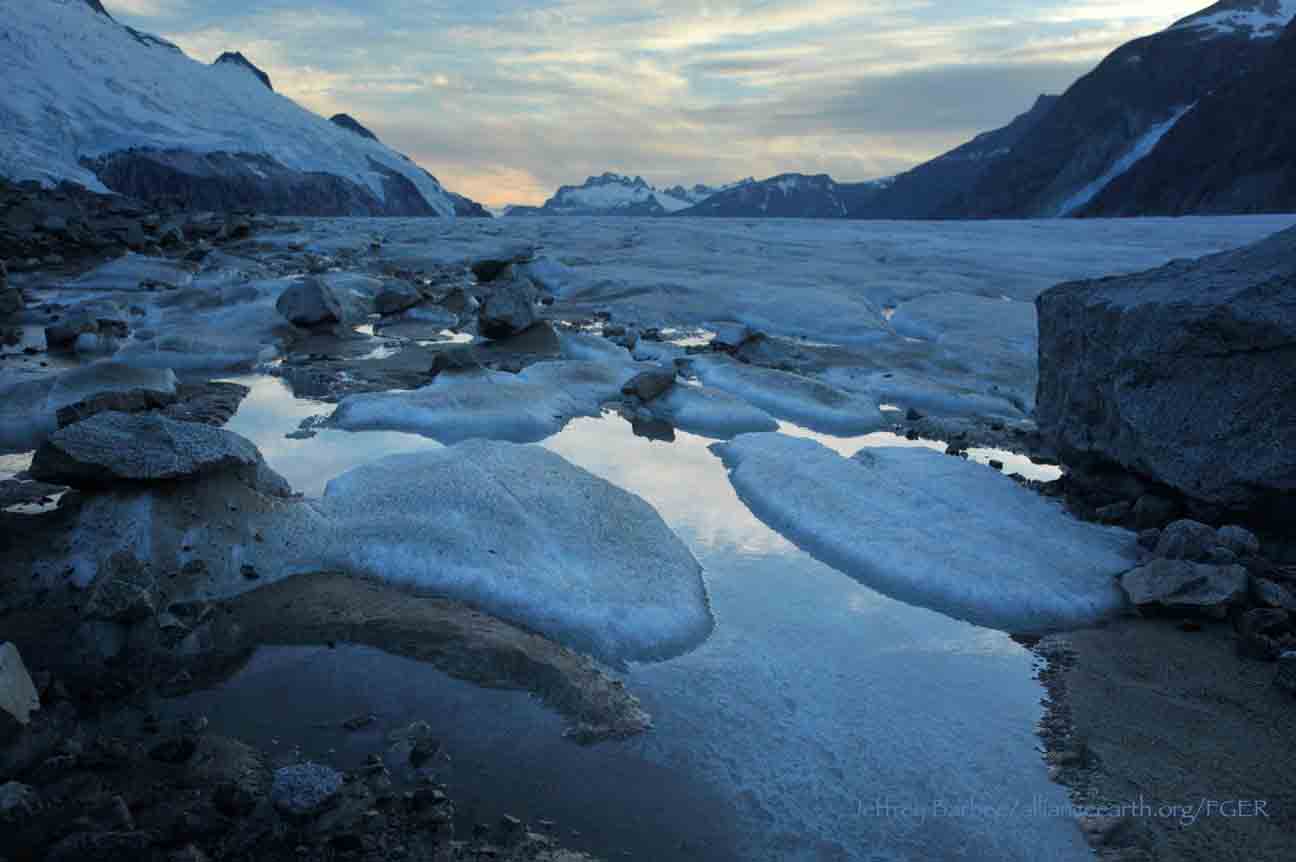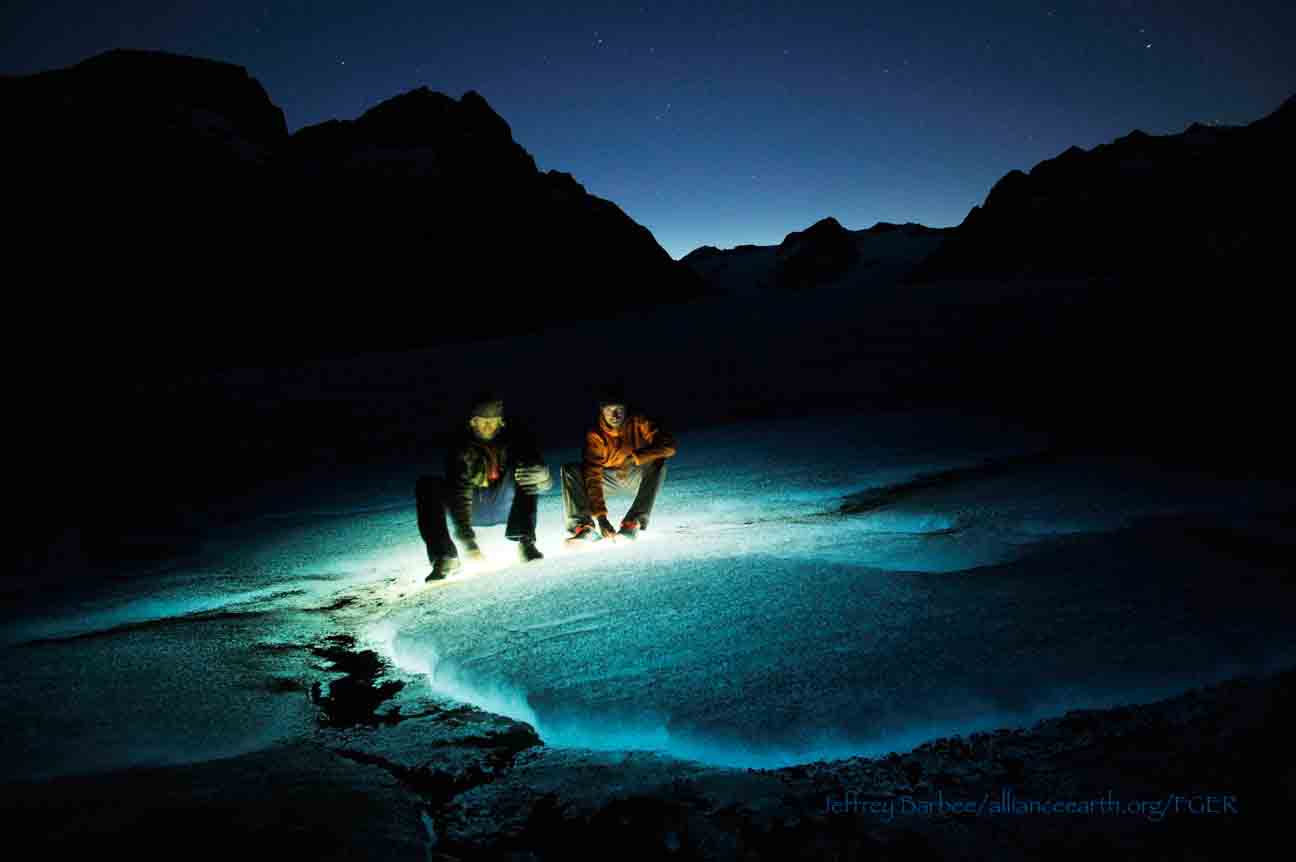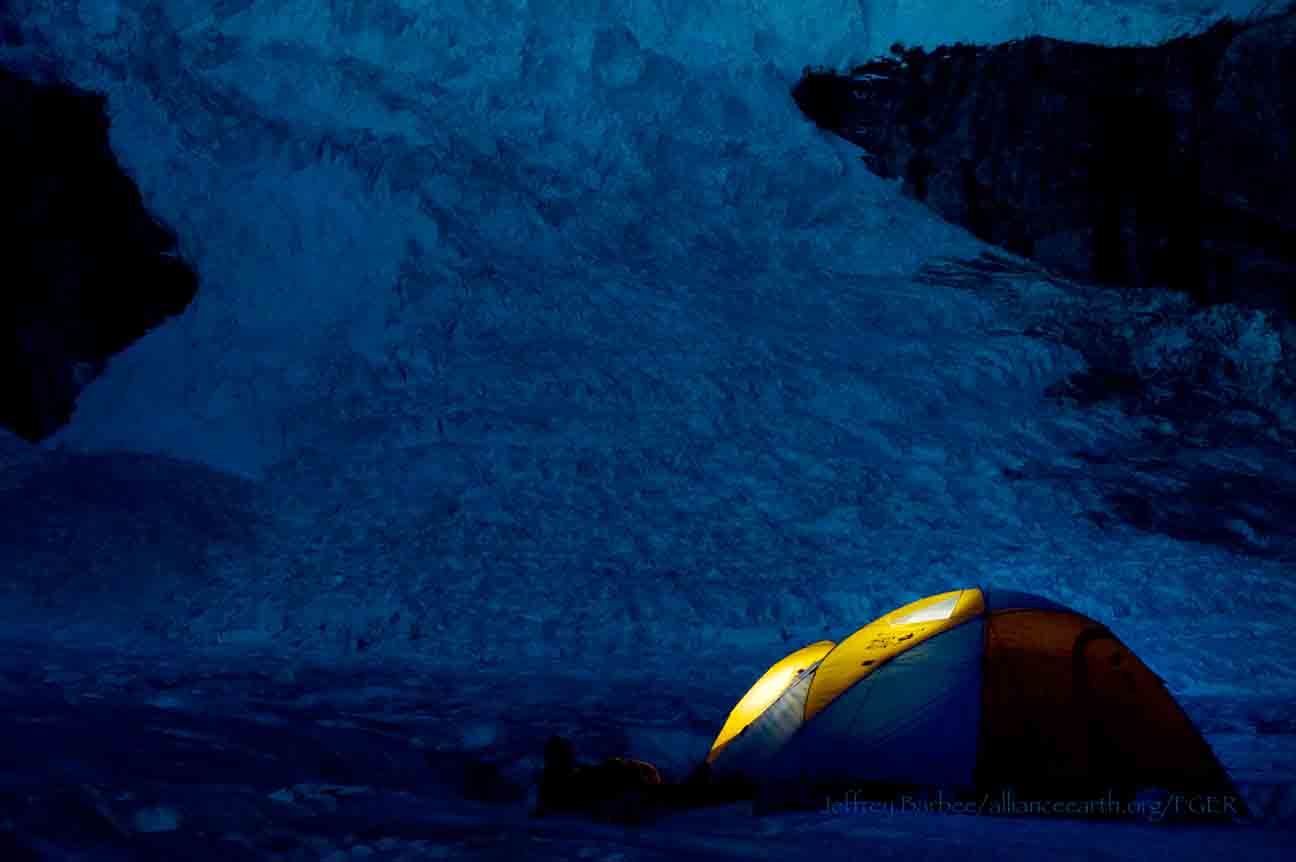By Crystal Yong, Yale-NUS College
Camp 17 is infamous for its cold, wet, rainy weather. After the treacherous traverse there from Juneau, we got one rest day before jumping right into safety training, slogging it out in the rain for five days in a row to become proficient in the skills required to cross the glaciers. I was beginning to feel a little down because of the non-stop routine and horrible weather, so when I was assigned cook duty on the sixth day, I was overjoyed at the thought of being able to stay indoors all day.
It was just my luck that this happened to be the first day the rain stopped and the sun came out. It didn’t make me feel any better to see everyone wash their hair and do their laundry under the sunny weather, while I had to cook, wash dishes and crush cans in the cook shack.
Yearning for a glimpse of the outside, I found a window above the stove and was immediately captivated by the view. It wasn’t solely the scenery that intrigued me, but the combination of the odd-shaped opening, the way the frame caught the sunlight, and the mix of items carelessly placed on the sill.
Window above stove of cook shack, Camp 17. Photo credit: Crystal Yong
This combination of objects captured the glow and warmth of the outside even better than the scenery itself. It felt like JIRP’s presence on the Juneau Icefield was reflected here, where people lived side-by-side with big nature, coexisting at a comfortable distance for both the people and the wilderness. This was when I began to develop a fondness for the windows around JIRP’s camps.
Back window of The Institute, Camp 10 Photo credit: Crystal Yong
The fact that there are so many windows makes it impossible to escape being with the outdoors, even if you’re in. At Camp 10, where there are many more sunny days, the light flooding through the many windows around camp reminds me of Dr. Maynard Miller’s famous words, “Nature is screaming at you”.
While every angle of the Icefield is beautiful, I somehow got the sense that each window was intentionally built to frame a certain scenic view. This intentionality really gives the sense that these JIRP camps are lived spaces. They aren’t just shacks for people to take a pit stop, or caches to store gear. They are places for explorers to live and be with nature.
Photographing these windows, I found that every one has its own unique character, with its special mix of objects placed around it. Just like the individuals in camp, they each have their own history and personality, and all carry beauty within them.
Quietly, these windows invite you to look up and out. And I think this sense of intrigue captures the spirit of many of the JIRPers I’ve met – they are all constantly looking, seeking for different ways to view the world, with eyes filled with fascination and hearts filled with both admiration and curiosity for the beauty around them.
Double Wide outhouse window, Camp 17. Photo credit: Crystal Yong
I have yet to see camps 18 and 26, but I’m excited to see what windows I’ll find there - I’m sure they won’t disappoint.


















